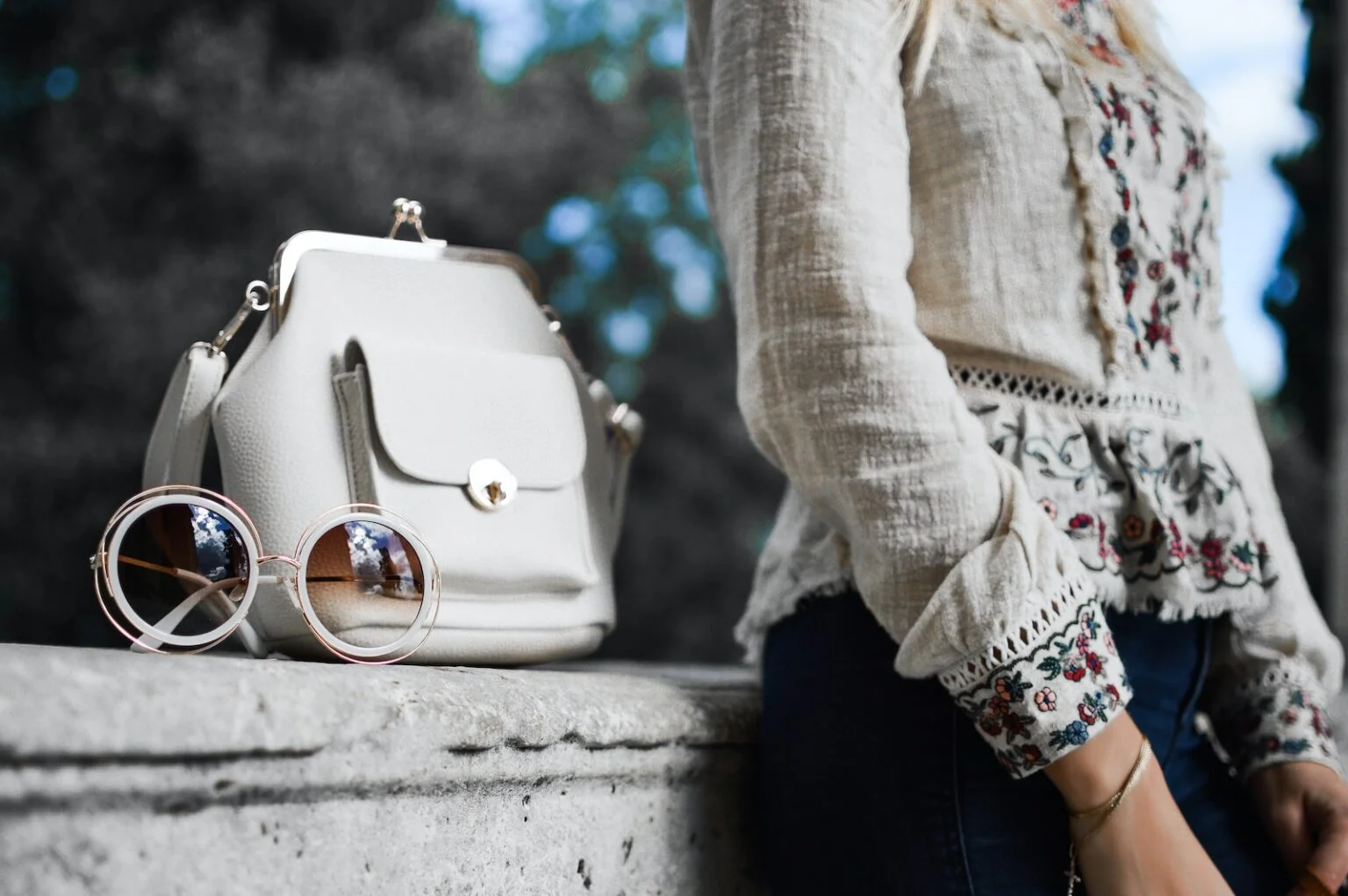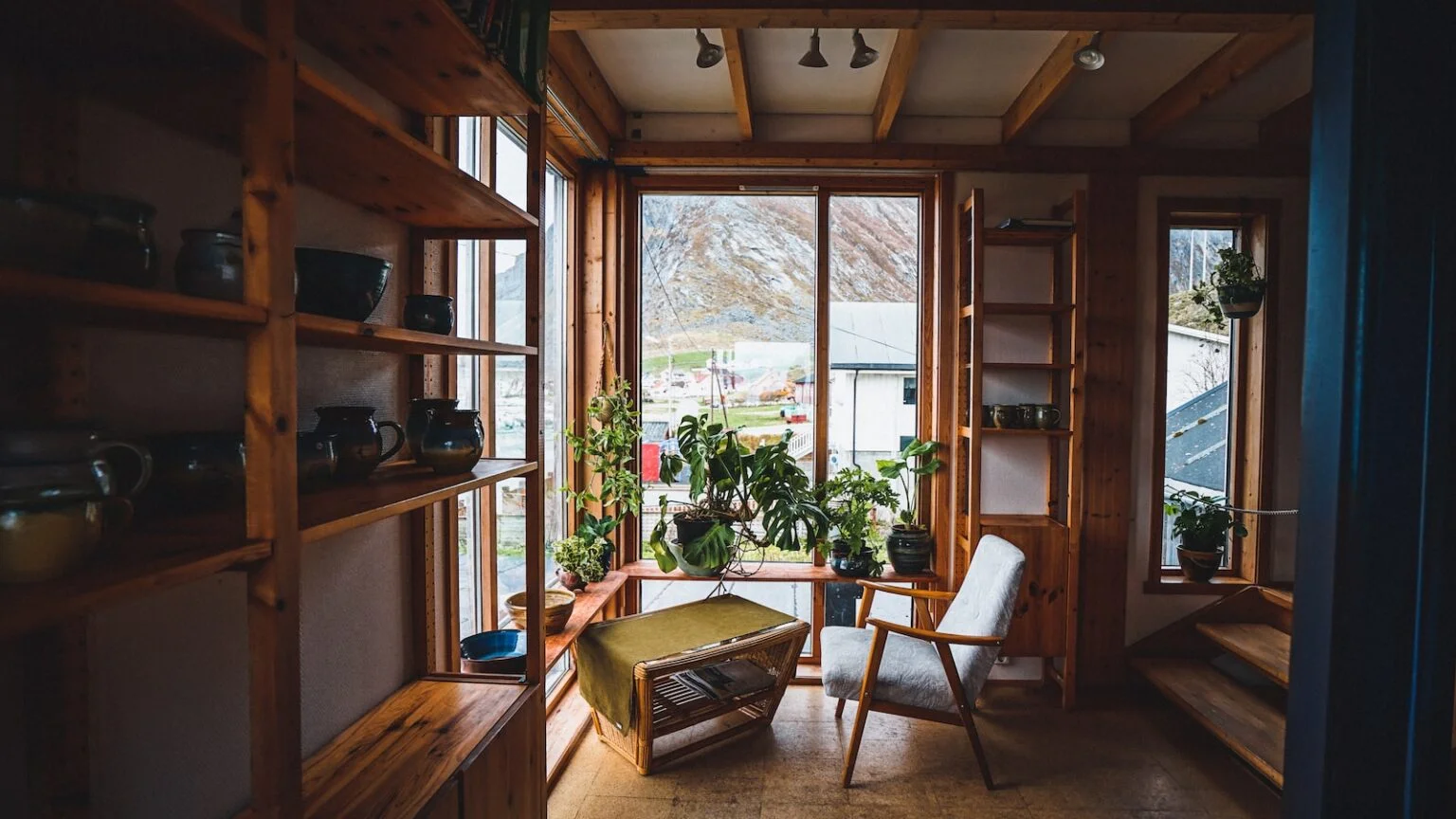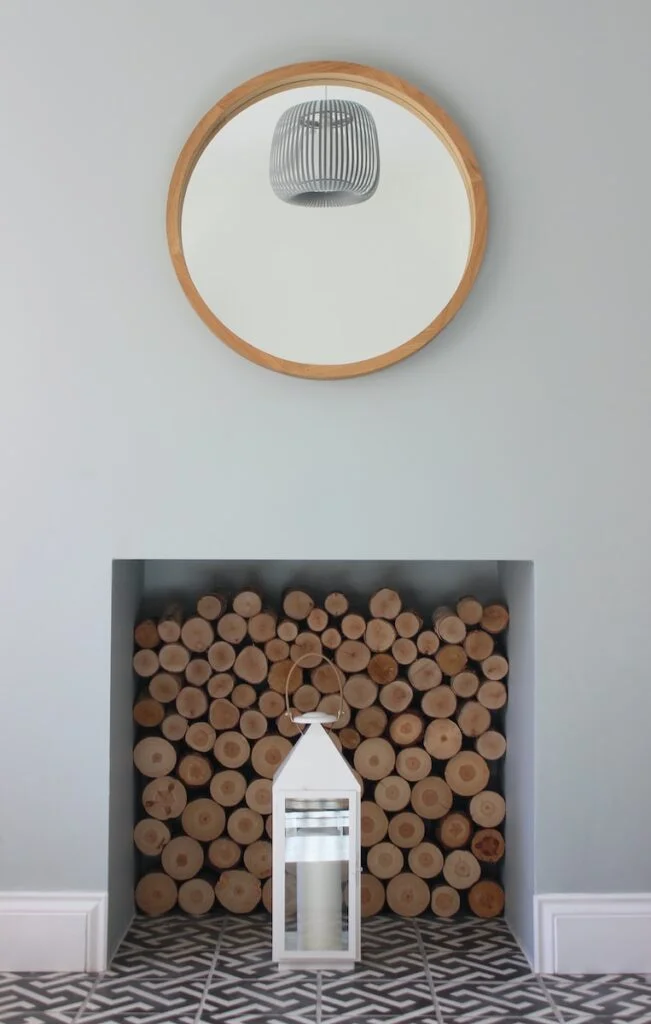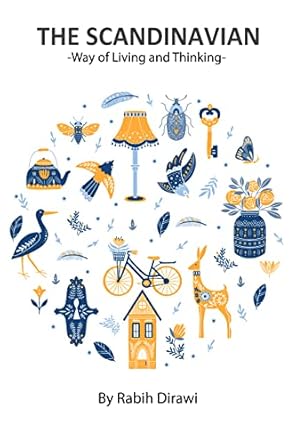
by newbeltane | Oct 6, 2023 | Fashion, Minimalism
Skandi Style Secrets: effortless chic and minimalism

When it comes to Skandi style secrets, the Scandinavian countries have long been known for their minimalist and effortlessly chic style. Skandi-inspired fashion is all about embracing simplicity, functionality, and elegance. This trend has gained popularity worldwide for its clean lines, neutral colour palette, and timeless designs.
One of the key elements of Skandi-inspired fashion is the focus on quality over quantity. Instead of following every passing trend, Skandi fashionistas invest in high-quality pieces that are versatile and can be worn for years to come. This approach not only helps to reduce waste but also ensures that your wardrobe is filled with timeless classics.
The colour palette of Skandi-inspired fashion is typically neutral and muted, with shades of white, beige, grey, and black taking centre stage. These colours create a sense of calmness and sophistication, allowing the focus to be on the design and silhouette of the garments. However, pops of colour can also be incorporated through accessories or statement pieces to add interest to the overall look.
 Skandi fashion is known for its clean lines and minimalist aesthetic. The silhouettes are often relaxed and effortless, with an emphasis on comfort and functionality. Oversized sweaters, tailored trousers, and flowy dresses are staples of this style. The key is to create a balanced and harmonious outfit by pairing loose-fitting pieces with more structured items.
Skandi fashion is known for its clean lines and minimalist aesthetic. The silhouettes are often relaxed and effortless, with an emphasis on comfort and functionality. Oversized sweaters, tailored trousers, and flowy dresses are staples of this style. The key is to create a balanced and harmonious outfit by pairing loose-fitting pieces with more structured items.
When it comes to fabrics, natural materials such as cotton, linen, and wool are preferred in Skandi-inspired fashion. These materials not only feel luxurious against the skin but also have a lower environmental impact compared to synthetic fabrics. Additionally, they age beautifully and become even softer over time, adding to the overall appeal of the garments.
Accessories play a crucial role in completing a Skandi-inspired look. Opt for minimalist and functional accessories that enhance the overall outfit without overpowering it. A simple leather belt, a delicate necklace, or a structured handbag can elevate even the most basic outfit. Remember, less is more when it comes to Skandi fashion.
Skandi-inspired fashion is not just about the clothes you wear but also about the way you style them. Keep your hair and makeup natural and effortless, with a focus on enhancing your natural beauty. Avoid heavy contouring or bold makeup looks, and instead, opt for a fresh-faced glow and a simple hairstyle.
In conclusion, Skandi-inspired fashion is all about embracing minimalism and elegance. By focusing on quality, clean lines, and a neutral colour palette, you can create a timeless and sophisticated wardrobe. Remember to keep it simple, functional, and effortlessly chic. Embrace the Skandi style and let your fashion choices reflect your inner sense of calmness and confidence.
The Best Scandi Fashion Brands You Need to Know About

Scandinavian fashion brands are known for their minimalist aesthetic, clean lines, and high-quality materials. Many of these brands focus on responsible design and a commitment to slow fashion, making them a great fit for shopping in a more sustainable way. Here are the top 3 Scandi fashion brands you need to know about:
1. Ganni – Known for its joyful and quirky designs, Ganni strikes the perfect balance between Danish cool and Parisian nonchalance. The brand offers printed silk dresses, biker jackets, and lots of great denim. They are also recognised as a responsible company, being a B-Corp Certified Company, meaning they are a business that meets the highly verified standards of social and environmental performance, transparency and accountability.@ganni
2. Acne Studios – Acne Studios offers minimalist clothing, shoes, and accessories for men and women. Their designs are known for their clean lines and high-quality materials.
Acne Studios, headquartered in Stockholm, approaches fashion from a multidisciplinary perspective. Founded and guided by Jonny Johansson, who possesses a keen interest in photography, art, architecture, and contemporary culture, the brand has embarked on an unconventional journey. This transformation has elevated Acne Studios to a well-regarded creator in the realms of ready-to-wear fashion, magazines, furniture, books, and exhibitions.
The hallmark of Acne Studios’ collections lies in Jonny Johansson’s distinctive design ethos, marked by a skilful blend of contrasts and meticulous attention to detail. The brand places a strong emphasis on tailoring while embracing an eclectic array of materials and bespoke fabrics. Their product range encompasses both men’s and women’s ready-to-wear fashion, footwear, accessories, and denim, ensuring a comprehensive style offering.
3. Filippa K – Filippa K offers sustainable clothing, shoes, and accessories for men and women. Their designs are known for their timeless style and focus on sustainability.
In 1993, Filippa K emerged as a brainchild of Filippa Knutsson, Karin Hellners, and Patrik Kihlborg, laying the foundation for the iconic essence of Scandinavian minimalism. Their vision was clear: to provide uncomplicated, well-crafted attire that seamlessly integrated with the realities of everyday life, effortlessly blending style and comfort.
Filippa Knutsson’s enduring dream of a straightforward, appealing, and eco-conscious wardrobe remains as pertinent today as it was when she initiated this venture at her kitchen table in the 1990s. The brand’s collection of ready-to-wear apparel and accessories continues to redefine timeless fashion, viewing it through a modern lens, all while embracing meticulous craftsmanship and unwavering attention to detail.
Other Scandi fashion brands that deserve a spot on your radar include Cecilie Bahnsen, Stine Goya, Baum und Pferdgarten, and Samsøe Samsøe. These brands offer something for everyone, from playful prints to timeless staples. Investing in key statement pieces you’ll wear forever or shopping for transitional garments you can style all year round is a great way to bring some of the best Scandinavian brands into your wardrobe.
Citations:
[1] https://www.harpersbazaar.com/uk/fashion/what-to-wear/news/g33319/the-scandinavian-brands-to-know/
[2] https://www.whowhatwear.com/best-danish-fashion-brands
[3] https://www.marieclaire.co.uk/fashion/best-scandinavian-fashion-brands-791520
[4] https://www.vogue.co.uk/fashion/article/scandinavian-fashion-brands
[5] https://graziadaily.co.uk/fashion/shopping/scandinavian-fashion-clothing-brands-shopping-autumn-winter/
[6] https://www.redonline.co.uk/fashion/a28633609/best-scandinavian-brands/

by newbeltane | Oct 5, 2023 | Autumn, Hygge Lifestyle
Embrace the Autumn Essence
Why not fall in love with Hygge this autumn? As the vibrant hues of summer fade into the distance, the arrival of autumn ushers in a unique blend of emotions.
On one hand, we yearn for the serenity of home after the hustle and bustle of summer, but on the other, we hold tightly to the fleeting warmth of the season. However, the desire for cosiness persists throughout, and that’s where Hygge comes into play.
 The crisp autumn air carries with it the earthy aroma of fallen leaves, a reminder of the changing seasons. To counteract this brisk scent, consider infusing your living space with a warm and inviting ambience. Drawing inspiration from our Scandinavian friends, here are some simple yet effective ways to prepare your home for autumn.
The crisp autumn air carries with it the earthy aroma of fallen leaves, a reminder of the changing seasons. To counteract this brisk scent, consider infusing your living space with a warm and inviting ambience. Drawing inspiration from our Scandinavian friends, here are some simple yet effective ways to prepare your home for autumn.
1. Textile Layering
One of the quickest ways to add warmth and comfort to your living space is by layering textiles on existing furniture. Wooden floors come to life with the addition of knitted rugs, while stools become cosier with sheepskin seat pads. These small adjustments can make a significant difference in creating a hygge atmosphere.

2. Cosy Blankets
Every home needs a wool or brushed-cotton blanket that’s ready for snuggling under. As you bid farewell to lightweight linen throws that adorned your sofa during the warmer months, these blankets become essential companions for chilly autumn evenings.
3. Embrace Natural Light
Certainly, incorporating natural light into your living spaces is not only a key aspect of Scandinavian design but also has numerous health and well-being benefits. Let’s delve into why natural light is good for you:
1. Mood Enhancement:
Natural light is a mood booster. Exposure to sunlight triggers the release of serotonin, often referred to as the “feel-good” hormone. This can help improve your mood and reduce feelings of anxiety and depression. In Scandinavian countries, where sunlight is limited during the winter months, maximizing natural light in interiors is particularly important for mental well-being.
2. Vitamin D Production:
Sunlight is a natural source of vitamin D, which is essential for maintaining healthy bones and a strong immune system. When your skin is exposed to sunlight, it synthesizes vitamin D. Ensuring you have access to natural light in your home can contribute to your overall health.
3. Increased Productivity:
Natural light has been shown to enhance productivity and focus. When you work or study in well-lit spaces, you tend to be more alert and attentive. This is especially beneficial if you have a home office or study area.
4. Better Sleep Patterns:
Exposure to natural light during the day helps regulate your body’s internal clock or circadian rhythm. This, in turn, can improve your sleep patterns. Scandinavian design often prioritizes large windows to let in ample daylight during the day, while using blackout curtains to ensure restful sleep at night.
5. Eye Health:
Well-distributed natural light reduces eye strain and can prevent eye fatigue. It’s easier to read, work on a computer, or engage in various activities when you have an abundance of natural light in the room.
6. Connection to Nature:
Having access to natural light allows you to connect with the outside world. It provides a sense of being in touch with nature, even when you’re indoors. This connection to the outdoors can have a calming and grounding effect.
7. Energy Efficiency:
Maximizing natural light in your home can also save energy. During the day, you can rely less on artificial lighting, which reduces electricity consumption and lowers your energy bills. In the context of sustainable living, this is an important consideration.
8. Visual Comfort:
Natural light provides balanced and even illumination, reducing glare and harsh shadows. This enhances the visual comfort of your living spaces, making them more inviting and pleasant.
9. Healthier Plants:
If you’re a fan of indoor plants, natural light is crucial for their well-being. It promotes healthy growth and helps plants purify the air, contributing to a healthier indoor environment.
Incorporating natural light into your home, whether through large windows, skylights, or strategically placed mirrors to reflect light, not only aligns with the principles of Scandinavian design but also promotes your physical and mental well-being. It creates spaces that are not only aesthetically pleasing but also conducive to a healthier and happier lifestyle.

4. The Beauty of Logs
For a touch of rustic elegance, consider incorporating a log stack into your decor, whether indoors or outdoors. Logs bring a piece of nature into your home, mirroring the beauty of the trees outside. If you lack alcoves or shelves for this purpose, consider using waney-edged placemats, wooden platters, or charger plates to showcase your love for logs.

5. Moody Color Palettes
Scandinavian design is known for its simplicity, functionality, and use of a specific colour palette that reflects the region’s natural beauty and lifestyle. In this article, we’ll explore some of the most popular colours in Scandinavian design and how they can be incorporated into various aspects of interior decor.
White – The Foundation of Scandinavian Design
White is the cornerstone of Scandinavian design. It’s used liberally on walls, ceilings, and even furniture to create a sense of airiness and light in interior spaces. This clean and crisp colour choice helps maximize natural light, especially during the long, dark winters in the Nordic countries. For example, a living room with white walls and a white sofa can give a sense of spaciousness and simplicity.

Soft Greys – A Subtle Elegance
Soft shades of grey are often used as accent colours in Scandinavian interiors. These muted greys add depth and sophistication without overwhelming the overall design. Picture a Scandinavian bedroom with light grey bedding or curtains to create a cosy and serene atmosphere.
Neutral Tones – Nature-Inspired Hues
Scandinavian design takes inspiration from nature, and this is reflected in the choice of neutral tones like beige, taupe, and oatmeal. These earthy colours evoke a sense of calm and warmth. In a dining room, you might see a wooden table paired with chairs decorated with natural fabrics.

Blues – A Nod to Water and Sky
Blues are used sparingly in Scandinavian interiors to represent the sky and water. Whether it’s a pale blue accent wall in a bathroom or soft blue textiles in a living room, this colour choice adds a refreshing touch of nature.
Pastel Accents – Soft Pops of Color
While Scandinavian design is predominantly neutral, pastel hues like soft pink, mint green and powder blue are used as accents to inject a bit of playfulness into the decor. For instance, you might find pastel-coloured cushions on a neutral-toned sofa.

Black – A Striking Contrast
To create visual contrast and depth, black is occasionally introduced into Scandinavian interiors. Black accents like picture frames, light fixtures, or even a bold black feature wall can provide a striking focal point.
Natural Wood – Warmth and Texture
While not a traditional colour, natural wood is a quintessential element in Scandinavian design. The warm, honey-toned wood adds both colour and texture to spaces. Think of a Scandinavian kitchen with wooden cabinets and countertops.
Greenery – Bringing the Outdoors In
Living plants and greenery are essential in Scandinavian design, adding vibrant splashes of colour. A room adorned with lush green plants instantly feels more alive and connected to nature.
Incorporating these popular colours and elements into your home’s design can help you achieve that quintessential Scandinavian look.
Remember that Scandinavian design is all about balance, so use these colours sparingly and allow ample white space for a clean, uncluttered feel. By embracing the Scandinavian colour palette, you can create a welcoming and harmonious living space that reflects the essence of this timeless design style.
6. Timeless Materials
Update the materials in your home by introducing more timeless elements such as leather and wood. The warm brown tones of these materials echo the autumnal colours of the world outside, seamlessly blending your indoor and outdoor spaces.
7. Enhance Your Lighting
As the days grow shorter and artificial light becomes essential, evaluate your lighting setup. Ensure you have enough low-level lighting to create a calm and cosy atmosphere. If your home lacks dimmable switches, consider adding lamps to side tables or cosy corners. Proper lighting can set the mood for a welcoming and inviting living space this autumn. Candles can also create a warm and cosy ambience, especially in the evenings.

8. Embrace Everyday Joy
Finally, take a moment to savour the little things. Pour your daily cup of tea from a delightful teapot. Consider adding a vintage Danish Tue Poulsen stoneware teapot to your collection, with its earthy brown and beige tones perfectly aligned with the season. Autumn brings with it more opportunities for quiet moments and cups of tea, so make the most of it.
In conclusion, as the leaves change and the air turns crisper, you have the power to infuse your home with the essence of Hygge. These simple yet effective tips, inspired by Scandinavian traditions, will help you create a cosy and inviting space to embrace the beauty of autumn. So, get ready to welcome the season of hygge with open arms and a warm heart.

by newbeltane | Oct 2, 2023 | Cultural Concepts, Family, Outdoors, Play, Skandi Living, Traditions
 Scandinavian countries have a reputation for being among the happiest in the world and for raising happy kids. One reason for this is their approach to parenting, which places a strong emphasis on creating a balanced, nurturing, and inclusive environment for children.
Scandinavian countries have a reputation for being among the happiest in the world and for raising happy kids. One reason for this is their approach to parenting, which places a strong emphasis on creating a balanced, nurturing, and inclusive environment for children.
Skandi parenting prioritizes the overall well-being of the child, and this philosophy has been adopted by many parents around the globe.
In this article, we will explore the principles and values associated with Skandi parenting, highlighting how they contribute to raising happy kids who are confident and well-rounded children. We will discuss the importance of family traditions, the emphasis on play, the promotion of gender equality, and the supportive parenting style prevalent in Scandinavian countries.
We will also touch on the Scandinavian education and childcare system, the balance between independence and security, and the importance of mental health and community support. All of these factors are important in how Scandinavians go about raising happy kids.
Key Takeaways
- Skandi parenting prioritises the overall well-being of the child
- Family traditions play a significant role in strengthening family bonds and promoting a sense of belonging
- Emphasis on play and spending time in nature is crucial for a child’s physical, cognitive, and emotional development
- Promoting gender equality and nurturing a supportive environment are key to raising well-rounded children
- Scandinavian education and childcare system emphasises child-centred learning and high-quality early childhood education.
The Importance of Family Traditions in Raising Happy Kids
Family traditions are a cornerstone of Skandi parenting, providing a sense of stability and continuity in a child’s life. Whether it’s celebrating holidays, cooking together, or simply spending quality time as a family, these traditions have a profound impact on a child’s emotional well-being and development.

Research shows that children who grow up with strong family traditions are more likely to have higher self-esteem, better academic performance, and a stronger sense of identity and belonging. In Skandi parenting, family traditions are seen as a way to create a sense of community and shared purpose, strengthening the bonds between family members.
But family traditions are not just important for children. They also provide a sense of connection and meaning for parents, helping them to feel more grounded and centred in their busy lives.
By taking the time to establish and uphold family traditions, parents can create a sense of rhythm and routine in their family life, making it easier to navigate the challenges and stressors of modern parenthood.
So, when it comes to raising happy kids, one of the key principles of Skandi parenting is the value placed on togetherness and shared experiences.

Family traditions help to cultivate this sense of togetherness, providing a way for parents and children to connect and bond on a deeper level. By incorporating traditions into your family’s life, you can create a sense of continuity and connection that will stay with your children throughout their lives.
Children who grow up with strong family traditions are more likely to have higher self-esteem, better academic performance, and a stronger sense of identity and belonging. In Skandi parenting, family traditions are viewed as a way to create a sense of community and shared purpose, strengthening the bonds between family members.
Family traditions are not just important for children. They also provide a sense of connection and meaning for parents.
By taking the time to establish and uphold family traditions, parents can create a sense of rhythm and routine in their family life, making it easier to navigate the challenges and stressors of modern parenthood.
This includes establishing rhythms in the day-to-day, as well as creating special, yearly events that the family can look forward to.

Examples of family traditions:
| Tradition | Description |
|---|
| Family meals | Gathering around the table for regular meals, enjoying good food and conversation |
| Holidays | Celebrating holidays such as Christmas, Easter, and Midsummer together as a family |
| Outdoor activities | Regularly spending time outside, whether it’s hiking, biking, or skiing |
| Game night | Regularly playing games as a family |
| Storytelling | Sharing stories and memories as a family, passing down traditions and family history |
| Volunteering | Engaging in community service and volunteer work as a family |
Overall, family traditions play an integral role in Scandi parenting, contributing to the overall well-being and development of children. Incorporating traditions into your family’s life can provide a sense of connection and meaning that will stay with your children throughout their lives.
Emphasis on Play and Outdoor Activities
Scandinavian parenting places a strong emphasis on play and outdoor activities as essential components of a child’s development. Research has shown that children who engage in free, unstructured play have better physical, cognitive, and emotional development than those who do not.

In Skandi parenting, children are encouraged to spend time outdoors every day, regardless of the weather. This practice is rooted in the belief that nature has a positive influence on a child’s well-being and development. Outdoor play allows children to explore their surroundings, develop their senses, and learn about the world around them.
Skandi parenting also values unstructured play, where children can create their own games and activities without adult guidance. This type of play promotes creativity, imagination, and problem-solving skills.
Whether it’s building forts, playing in the mud, or climbing trees, Skandi parenting emphasizes the importance of allowing children to play freely and explore their surroundings.
In addition to physical activity, Skandi parenting places a high value on social play. Children are encouraged to play with others, develop social skills, and build meaningful relationships with their peers. Through play, children learn how to communicate, negotiate and resolve conflicts, which are important skills for their future success.
Overall, Skandi parenting recognizes the importance of play and outdoor activities for a child’s development. By promoting unstructured play, time in nature, and social play, Scandi parenting fosters well-rounded, confident, and resilient children who are ready to take on the world.
Gender Equality in Parenting
Scandinavian parenting places great emphasis on gender equality in childcare responsibilities. This means that both parents share the responsibility of taking care of the children and household tasks equally.
Gender-neutral values are promoted, encouraging children to pursue their interests and develop skills regardless of whether they align with gender stereotypes. Boys are encouraged to participate in activities traditionally associated with girls, such as cooking and caring for dolls, while girls are encouraged to explore traditionally male-dominated fields such as engineering and sports.
This approach promotes a more equitable society, with children and adults alike taking on equal roles and responsibilities. It also helps to break down gender stereotypes and promotes a more inclusive society.
Supportive Parenting Style
In Scandinavian parenting, creating a supportive and nurturing environment for children is a top priority. This involves a parenting style that focuses on empathy, trust, and open communication. Parents aim to understand their children’s feelings and perspectives and provide them with emotional support. They also encourage their children to express themselves freely and provide a safe space for them to do so.
This approach helps children develop a sense of security and confidence, which is essential for their emotional and cognitive development. Children who grow up in a supportive environment are more likely to have positive self-esteem and build healthy relationships in the future. Moreover, parents who adopt a supportive parenting style can establish a strong bond with their children, which is crucial for their overall well-being.
Scandinavian parents also recognise the importance of setting boundaries and discipline in child-rearing. However, they do so in a way that is respectful and considerate of their children’s needs and emotions. They avoid using physical punishment or shaming as a form of discipline and instead use positive reinforcement and logical consequences to teach their children appropriate behaviour.
Education and Childcare System
Scandinavian countries have a well-regarded education and childcare system, which is a core component of Scandi parenting. The system places a strong emphasis on child-centred learning, inclusive education, and high-quality early childhood education as pillars of child development.
Childcare in Scandinavian countries is considered a public service, with access available to all families regardless of their income level. The early childhood education and care (ECEC) curriculum focuses on socialization, play-based learning, and emotional development, with an emphasis on nurturing the whole child.
The education system is one of the most progressive in the world, with a focus on individualized learning and student autonomy. The curriculum is designed to encourage creativity, critical thinking, and problem-solving skills, which are essential for success in today’s rapidly changing world.
One of the unique features of Scandinavian education is the emphasis on cooperative learning and teamwork, which helps children develop important social skills and emotional intelligence. The system also places a strong emphasis on inclusive education, ensuring that all children have access to equal educational opportunities regardless of their background or abilities.
Inclusive Education
Scandinavian countries have a strong commitment to inclusive education, and their education systems are designed to meet the diverse needs of all learners. Teachers receive extensive training in supporting children with special needs, and schools offer a range of support services to ensure that all students can reach their full potential.
Children with special needs are integrated into mainstream schools as much as possible, with additional support provided as needed. This approach helps to reduce stigma and promote acceptance and understanding of different abilities and backgrounds.
The Scandinavian education and childcare system provides a nurturing environment for children to grow and develop, with a focus on individualized learning, socialization, and emotional well-being. This holistic approach is a cornerstone of Scandi parenting and contributes to raising well-rounded and content children.
Balancing Independence and Security
One of the key principles of Skandi parenting is striking a balance between independence and security. This approach emphasizes the importance of allowing children to explore and take risks while providing a safe and supportive environment.
This balance is achieved through a combination of factors, including the promotion of unstructured playtime and outdoor activities, as well as an emphasis on encouraging self-reliance and decision-making skills.
Studies have shown that children who are given the freedom to explore and take risks are more likely to develop cognitive and physical skills, as well as a sense of self-confidence. However, it is equally important to provide a secure environment where children feel safe and supported in their exploration.
In Scandinavian countries, parents and caregivers work to create environments where children can take risks and make their own decisions, while still feeling supported and guided. This approach helps children develop a sense of independence and autonomy, while also providing a foundation of security and support.
By balancing independence and security, Skandi parenting creates an environment that allows children to flourish and grow into well-rounded and capable individuals.
Emphasis on Well-being and Mental Health
Skandi parenting prioritizes the mental health and well-being of children. It acknowledges the importance of emotional intelligence, self-care, and resilience in building strong, healthy individuals. By promoting a supportive and nurturing environment, children are encouraged to express their emotions freely and develop coping mechanisms to deal with difficult situations.
 One of the ways Skandi parenting achieves this is by teaching children self-care from an early age. This includes activities like meditation, mindfulness, and relaxation techniques to help manage stress and anxiety. Children are also encouraged to spend time outdoors, connecting with nature to boost their mental and physical well-being.
One of the ways Skandi parenting achieves this is by teaching children self-care from an early age. This includes activities like meditation, mindfulness, and relaxation techniques to help manage stress and anxiety. Children are also encouraged to spend time outdoors, connecting with nature to boost their mental and physical well-being.
Another aspect of Skandi parenting is teaching children emotional intelligence. Children are taught to acknowledge and express their emotions freely, learning how to communicate their feelings effectively. This creates a safe and supportive environment for children, where they can feel heard and understood, building their sense of self and self-worth.
Resilience is another key attribute promoted by Skandi parenting. By teaching children to be adaptable and flexible, they learn to embrace challenges and find solutions to overcome them. This mindset helps children develop a growth mindset, which is essential for building strong, resilient individuals.
“Promoting self-care, emotional intelligence and resilience in children is at the core of Scandi parenting”
Overall, Skandi parenting focuses on building strong, healthy individuals by prioritizing their mental health and well-being. By creating a nurturing and supportive environment, children are encouraged to express their emotions freely, learn self-care techniques, and develop resilience to overcome challenges. These skills and values are critical for ensuring children grow up to be content, well-rounded individuals.
Slow Living and Minimalism
Scandinavian parenting emphasises the value of simplicity and minimalism. The concept of slow living is central to this philosophy, focusing on quality over quantity. This approach encourages parents to create a calm and nurturing environment for their children by simplifying life and reducing clutter.
Minimalism is a way of life that advocates for living with only the essentials. This approach to parenting helps children develop a sense of appreciation for what they have rather than a desire for more. By reducing the distractions that come with excess material possessions, children can focus on other aspects of life, such as spending time with family and friends.
 Minimalism also encourages parents to focus on quality time with their children. Rather than overwhelming them with too many activities, parents can choose to spend more time engaging in unstructured play and outdoor activities. This approach promotes creativity and fosters a sense of independence in children, allowing them to develop their imaginations and self-confidence.
Minimalism also encourages parents to focus on quality time with their children. Rather than overwhelming them with too many activities, parents can choose to spend more time engaging in unstructured play and outdoor activities. This approach promotes creativity and fosters a sense of independence in children, allowing them to develop their imaginations and self-confidence.
Overall, the slow living and minimalism philosophy in Scandinavian parenting encourages parents to create a calm and nurturing environment for their children. It helps children develop an appreciation for quality over quantity and encourages creativity and independence. By promoting a simplified way of life, parents can help their children focus on the things that matter most in life.
Building Strong Social Connections
Skandi parenting places a strong emphasis on building relationships and social connections as an essential part of a child’s development. Children are encouraged to interact with a diverse range of people, promoting inclusivity and empathy.
 The close-knit community in Scandinavia also plays a significant role in supporting families and children. From parental leave policies to communal childcare, society values the importance of providing high-quality care for children.
The close-knit community in Scandinavia also plays a significant role in supporting families and children. From parental leave policies to communal childcare, society values the importance of providing high-quality care for children.
Research suggests that strong social connections positively impact a child’s cognitive and social development. In Skandi parenting, children are encouraged to make friends and build relationships through unstructured play, group activities, and shared experiences.
Parents foster social skills in their children by modelling a positive attitude towards building strong relationships. They teach children to respect and value others’ opinions and to embrace differences, creating a healthy and inclusive social environment.
Overall, building strong social connections is a fundamental aspect of Skandi parenting that contributes to a child’s well-being and development. By encouraging the development of social skills and promoting diversity and inclusivity, children are equipped to thrive in their relationships and communities.
Conclusion
Skandi parenting, with its emphasis on family traditions and child-centred values, is proving to be an effective approach to raising well-rounded, content children. By prioritising play, outdoor activities, and gender equality, Scandinavian parents are helping their children develop important physical, cognitive, and emotional skills.
The supportive parenting style, focus on education and childcare, and emphasis on both independence and security contribute to the overall well-being of children.
In addition, Skandi parenting encourages the prioritisation of mental health and emotional intelligence, slow living and minimalism, and fostering strong social connections.
By creating a nurturing environment for their children, Scandinavian parents are helping their children grow into resilient, empathetic, and confident adults.
Overall, implementing Skandi parenting principles and family traditions can have a significantly positive impact on child development and family life. By taking a holistic approach and prioritizing the well-being of their children, Scandinavian parents are setting their children up for success in all areas of life.
FAQ
Q: What is Skandi parenting?
A: Skandi parenting refers to the parenting approach influenced by Scandinavian values and principles. It emphasizes creating a nurturing and supportive environment, promoting gender equality, emphasizing play and outdoor activities, and prioritizing well-being and mental health.
Q: How can family traditions benefit children?
A: Family traditions play a vital role in Skandi parenting. They help strengthen family bonds, create a sense of belonging, and contribute to overall well-being. Family traditions provide children with a sense of identity and a foundation of values to carry into their adult lives.
Q: Why are play and outdoor activities emphasized in Skandi parenting?
A: Play and outdoor activities are highly valued in Scandinavian parenting. Unstructured play and spending time in nature have been shown to contribute to a child’s physical, cognitive, and emotional development. It promotes creativity, problem-solving skills, and a connection with the natural world.
Q: How does gender equality play a role in Skandi parenting?
A: Gender equality is a crucial aspect of Scandi parenting. It involves equal distribution of childcare responsibilities, promoting gender-neutral values, and challenging gender stereotypes. By encouraging equality, children learn inclusivity, respect, and the importance of sharing responsibilities.
Q: What is the supportive parenting style in Skandi parenting?
A: The supportive parenting style prevalent in Scandinavian countries focuses on creating a nurturing and supportive environment for children. It emphasizes empathy, trust, and open communication. This approach helps children develop strong emotional intelligence, resilience, and a sense of security.
Q: How does the Scandinavian education and childcare system differ?
A: The Scandinavian education and childcare system places a strong emphasis on child-centred learning and inclusive education. It prioritizes high-quality early childhood education, providing children with a supportive environment for holistic development and fostering a lifelong love of learning.
Q: How does Skandi parenting balance independence and security?
A: Scandinavian parenting encourages children to explore and take risks while providing a secure and supportive environment. Balancing independence and security helps children develop confidence, resilience, and decision-making skills, while still having a safety net of support.
Q: Why are well-being and mental health prioritised in Skandi parenting?
A: Scandi parenting recognises the importance of well-being and mental health in children’s overall development. It promotes self-care, emotional intelligence, and resilience. By prioritizing mental health, children learn to manage their emotions, form healthy relationships, and navigate life’s challenges with confidence.
Q: How do slow living and minimalism influence Skandi parenting?
A: Slow living and minimalism are significant influences in Scandi parenting. By simplifying life and focusing on quality over quantity, these principles create a calm and nurturing environment for children. It encourages mindfulness, appreciating the present moment, and reducing the stressors of a fast-paced society.
Q: Why are strong social connections important in Skandi parenting?
A: Building strong social connections is an essential aspect of Scandi parenting. It emphasizes community support, fostering social skills, and promoting inclusive and diverse friendships. Strong social connections contribute to a child’s sense of belonging, empathy, and cultural understanding.
Bestseller #4
- Gnome is a mythological creature from Scandinavian folklore, also known as a tomte or nisse makes the most thoughtful gi…
- This cute coffee gnome will please you with their kindness and charm.
- These coffee plush gnomes are ideal for farmhouse tiered tray decor.Suitable for placing on your table, desk, fireplace,…
Bestseller #6
- ✔ The MAMOI baby swing is equipped with appropriate protective measures. The fall protection at the MAMOI indoor swing o…
- ✔ The MAMOI indoor baby swing is made from ecological materials and of the highest quality. The seat is made of plywood …
- ✔ The design of the MAMOI baby swing door frame ensures special safety and durability. The maximum load capacity of the …

by newbeltane | Oct 2, 2023 | Cultural Concepts, Music, Traditions
Exploring Nordic Music.
 In this introduction to Nordic music, we explore the traditions and cultural roots of Nordic music and where it is today on the world stage, so to speak.
In this introduction to Nordic music, we explore the traditions and cultural roots of Nordic music and where it is today on the world stage, so to speak.
Key Takeaways:
- Skandi Music and Culture encompasses the musical traditions of Scandinavia
- The region’s rich cultural heritage greatly influences its music
- Skandi Music offers a mesmerising and unique sound
- Skandi Music has global recognition and influence
- Contemporary Skandi artists have adapted traditional sounds into modern genres
In the realm of Skandi Music and Culture, we embark on a captivating journey through the unique heritage and musical traditions of Scandinavia. Let’s delve into the diverse genres and styles that define this enchanting world.
A Rich Cultural Tapestry
Skandi Music and Culture
Skandi Music and Culture, deeply rooted in the enchanting Nordic landscapes, draw upon a rich tapestry of traditions. This captivating sonic journey is a homage to the centuries-old heritage that continues to evolve and inspire.
Traditional Tunes
From hauntingly beautiful fiddle tunes in Sweden to the mesmerizing vocal harmonies of Norway’s folk music, the Nordic region has a musical heritage as diverse as its breathtaking landscapes.
Influential Musicians
Legendary artists like Edvard Grieg and Jean Sibelius have left an indelible mark on the world of classical music with their timeless compositions. Their melodies evoke the spirit of the North.
Nature’s Influence: From Landscapes to Music
Skandi music’s connection to nature is profound, mirroring the region’s rugged landscapes and wild forests. Traditional Nordic music often features instruments like the Hardanger fiddle, evoking the Nordic wilderness.

Myths and Legends: Inspiring Melodies
Tales of trolls, elves, and mythical creatures inspire Skandi songs, capturing the mystical qualities of the Nordic imagination. Ancient folk dances and customs have been passed down through generations, adding depth to the Skandi music scene.
Skandi Music Today
Skandi music continues to evolve, blending traditional and contemporary sounds. Emerging artists, like Danish pop singer MØ and Norwegian indie-pop band Highasakite, are making waves. Norwegian producer Kygo’s fusion of traditional elements with electronic dance music has gained global recognition.
Contemporary Innovators
 Today, contemporary artists like Kygo have taken the Nordic music scene by storm. Kygo’s fusion of electronic beats with traditional Nordic elements has resonated with audiences worldwide.
Today, contemporary artists like Kygo have taken the Nordic music scene by storm. Kygo’s fusion of electronic beats with traditional Nordic elements has resonated with audiences worldwide.
Electrifying Trends
The infusion of electronic music into traditional Nordic sounds has sparked a new wave of creativity. It’s not just about the music; it’s about the atmosphere, the visual storytelling, and the emotional journey it creates.
Global Recognition
Skandi Music and Culture have transcended borders, garnering global recognition for their unique blend of tradition and innovation. It’s a genre that tugs at heartstrings and makes feet tap in unison.
An Unforgettable Auditory Odyssey
So, immerse yourself in the world of Skandi Music and Culture, where ancient melodies and contemporary beats converge to create an unforgettable auditory masterpiece. Experience the magic of the North through its enchanting sounds.
Influencing Global Trends
Skandi music’s unique blend of traditional and contemporary sounds, innovative use of electronic music, and minimalist aesthetic have captivated audiences worldwide. It has influenced artists globally and extended its impact on the fashion industry.
Established in 1999, the Øya Festival in Oslo, Norway, stands as a vibrant celebration of Skandi culture. It features a diverse lineup of national and international artists, spanning genres from rock and indie to electronic and hip-hop. Beyond music, the festival offers a rich selection of food, art installations, and cultural activities, making it a genuine celebration of Skandi culture.
Iceland Airwaves: An Icelandic Musical Showcase
 Held in Reykjavik, Iceland, the Iceland Airwaves Festival is another renowned Skandi festival. With over 200 acts performed across various venues in the city, this festival serves as a hub of musical discovery and exploration.
Held in Reykjavik, Iceland, the Iceland Airwaves Festival is another renowned Skandi festival. With over 200 acts performed across various venues in the city, this festival serves as a hub of musical discovery and exploration.
Conclusion
Skandi Music and Culture offer a mesmerising glimpse into the rich heritage and musical traditions of Scandinavia. From ancient folklore to contemporary sounds, the allure of Skandi music and culture continues to captivate audiences worldwide.


 Skandi fashion is known for its clean lines and minimalist aesthetic. The silhouettes are often relaxed and effortless, with an emphasis on comfort and functionality. Oversized sweaters, tailored trousers, and flowy dresses are staples of this style. The key is to create a balanced and harmonious outfit by pairing loose-fitting pieces with more structured items.
Skandi fashion is known for its clean lines and minimalist aesthetic. The silhouettes are often relaxed and effortless, with an emphasis on comfort and functionality. Oversized sweaters, tailored trousers, and flowy dresses are staples of this style. The key is to create a balanced and harmonious outfit by pairing loose-fitting pieces with more structured items.



 It is customary for those who reside in Skandi homes to remove their outdoor footwear upon entering their home. This practice promotes a hygienic and tranquil living space, free from outdoor debris and pollutants. By leaving one’s shoes at the door, individuals are able to fully relax and enjoy the comforts of their abode without the worry of tracking in unwanted dirt and germs.
It is customary for those who reside in Skandi homes to remove their outdoor footwear upon entering their home. This practice promotes a hygienic and tranquil living space, free from outdoor debris and pollutants. By leaving one’s shoes at the door, individuals are able to fully relax and enjoy the comforts of their abode without the worry of tracking in unwanted dirt and germs. The people of Skandi nations have a deep appreciation for marking momentous occasions with sweet indulgences such as cakes and desserts. They believe in living life to the fullest and savouring every moment without fretting over the caloric content of their delectable treats.
The people of Skandi nations have a deep appreciation for marking momentous occasions with sweet indulgences such as cakes and desserts. They believe in living life to the fullest and savouring every moment without fretting over the caloric content of their delectable treats. The phrase “open-air living” translates literally. It was first popularised in the 1850s by Henrik Ibsen, a Norwegian playwright and poet. Ibsen used the phrase to describe the benefits of spending time in remote locations to improve one’s spiritual and physical well-being. [2]. Friluftsliv is not just a thing, but a whole philosophy and a way of life that is incorporated into the national identity of Norway[1]. Here are some ways that embracing the outdoors can benefit your well-being:
The phrase “open-air living” translates literally. It was first popularised in the 1850s by Henrik Ibsen, a Norwegian playwright and poet. Ibsen used the phrase to describe the benefits of spending time in remote locations to improve one’s spiritual and physical well-being. [2]. Friluftsliv is not just a thing, but a whole philosophy and a way of life that is incorporated into the national identity of Norway[1]. Here are some ways that embracing the outdoors can benefit your well-being: Friluftsliv is about living a simple life in nature without destroying or disturbing it.
Friluftsliv is about living a simple life in nature without destroying or disturbing it. Lørdagkos is a lovely Norwegian tradition. It celebrates the joy of indulging in sweets and candy on Saturdays, which is seen as a special day of the week. It’s a time to relax and enjoy life’s simple pleasures with loved ones. Even shops reduce candy pick n mix prices on Saturdays due to the tradition’s popularity.
Lørdagkos is a lovely Norwegian tradition. It celebrates the joy of indulging in sweets and candy on Saturdays, which is seen as a special day of the week. It’s a time to relax and enjoy life’s simple pleasures with loved ones. Even shops reduce candy pick n mix prices on Saturdays due to the tradition’s popularity. In Skandi countries, the workday often starts early, setting a positive tone for the day. Prioritising early mornings can improve your balance between work and personal life.
In Skandi countries, the workday often starts early, setting a positive tone for the day. Prioritising early mornings can improve your balance between work and personal life. In this nurturing environment, individuals are encouraged to not only excel in their careers but also to nurture their personal lives. This prioritisation creates a profound sense of fulfilment and balance. It allows them to thrive in their professional roles while still cherishing the moments that matter most outside of work.
In this nurturing environment, individuals are encouraged to not only excel in their careers but also to nurture their personal lives. This prioritisation creates a profound sense of fulfilment and balance. It allows them to thrive in their professional roles while still cherishing the moments that matter most outside of work. Skandi people embrace each season with enthusiasm, finding joy in winter sports, spring’s renewal, and summer’s warmth. Adapting to seasonal changes adds balance and excitement to life.
Skandi people embrace each season with enthusiasm, finding joy in winter sports, spring’s renewal, and summer’s warmth. Adapting to seasonal changes adds balance and excitement to life.
 The crisp autumn air carries with it the earthy aroma of fallen leaves, a reminder of the changing seasons. To counteract this brisk scent, consider infusing your living space with a warm and inviting ambience. Drawing inspiration from our Scandinavian friends, here are some simple yet effective ways to prepare your home for autumn.
The crisp autumn air carries with it the earthy aroma of fallen leaves, a reminder of the changing seasons. To counteract this brisk scent, consider infusing your living space with a warm and inviting ambience. Drawing inspiration from our Scandinavian friends, here are some simple yet effective ways to prepare your home for autumn.







 Scandinavian countries have a reputation for being among the happiest in the world and for raising happy kids. One reason for this is their approach to parenting, which places a strong emphasis on creating a balanced, nurturing, and inclusive environment for children.
Scandinavian countries have a reputation for being among the happiest in the world and for raising happy kids. One reason for this is their approach to parenting, which places a strong emphasis on creating a balanced, nurturing, and inclusive environment for children.



 One of the ways Skandi parenting achieves this is by teaching children self-care from an early age. This includes activities like meditation, mindfulness, and relaxation techniques to help manage stress and anxiety. Children are also encouraged to spend time outdoors, connecting with nature to boost their mental and physical well-being.
One of the ways Skandi parenting achieves this is by teaching children self-care from an early age. This includes activities like meditation, mindfulness, and relaxation techniques to help manage stress and anxiety. Children are also encouraged to spend time outdoors, connecting with nature to boost their mental and physical well-being. Minimalism also encourages parents to focus on quality time with their children. Rather than overwhelming them with too many activities, parents can choose to spend more time engaging in unstructured play and outdoor activities. This approach promotes creativity and fosters a sense of independence in children, allowing them to develop their imaginations and self-confidence.
Minimalism also encourages parents to focus on quality time with their children. Rather than overwhelming them with too many activities, parents can choose to spend more time engaging in unstructured play and outdoor activities. This approach promotes creativity and fosters a sense of independence in children, allowing them to develop their imaginations and self-confidence. The close-knit community in Scandinavia also plays a significant role in supporting families and children. From parental leave policies to communal childcare, society values the importance of providing high-quality care for children.
The close-knit community in Scandinavia also plays a significant role in supporting families and children. From parental leave policies to communal childcare, society values the importance of providing high-quality care for children.






 In this introduction to Nordic music, we explore the traditions and cultural roots of Nordic music and where it is today on the world stage, so to speak.
In this introduction to Nordic music, we explore the traditions and cultural roots of Nordic music and where it is today on the world stage, so to speak.
 Today, contemporary artists like
Today, contemporary artists like  Held in Reykjavik, Iceland, the
Held in Reykjavik, Iceland, the